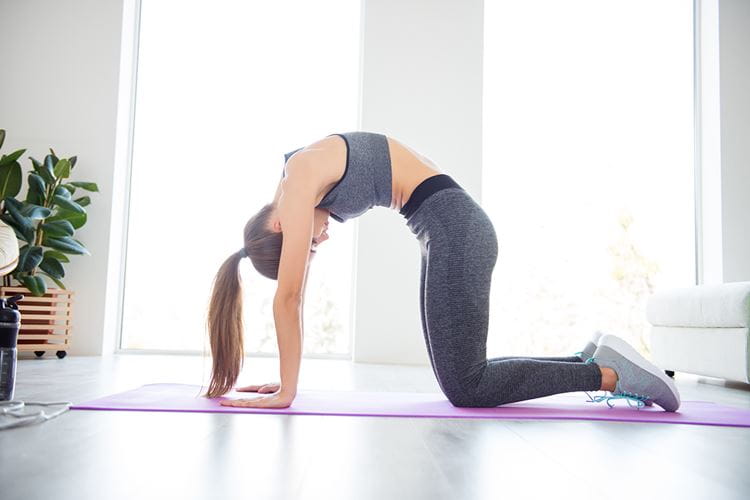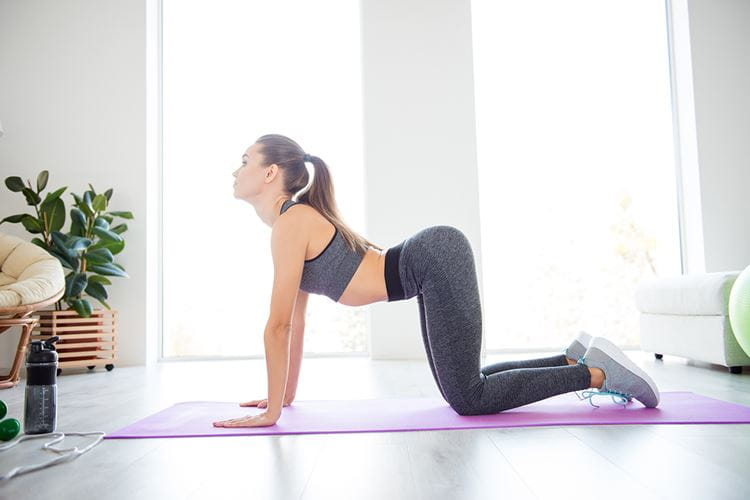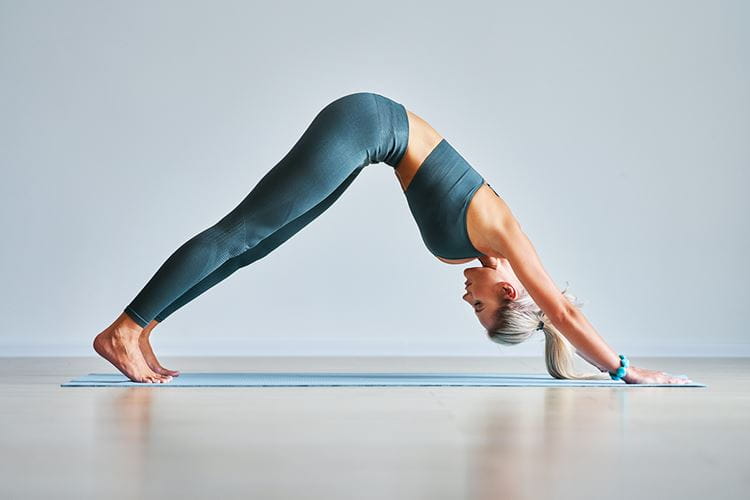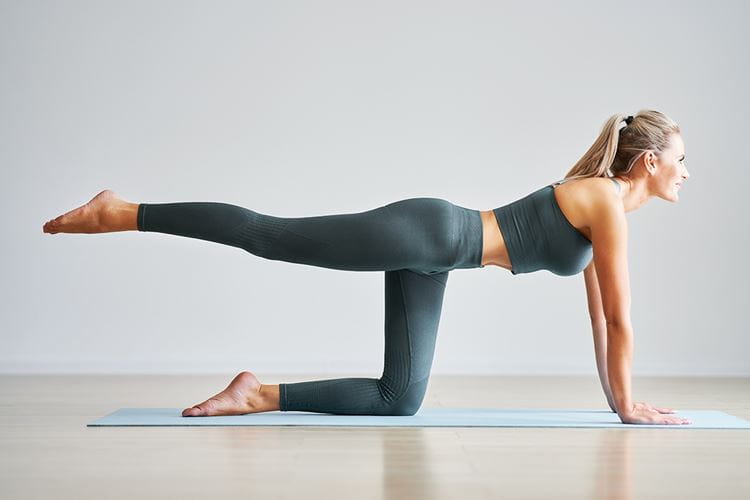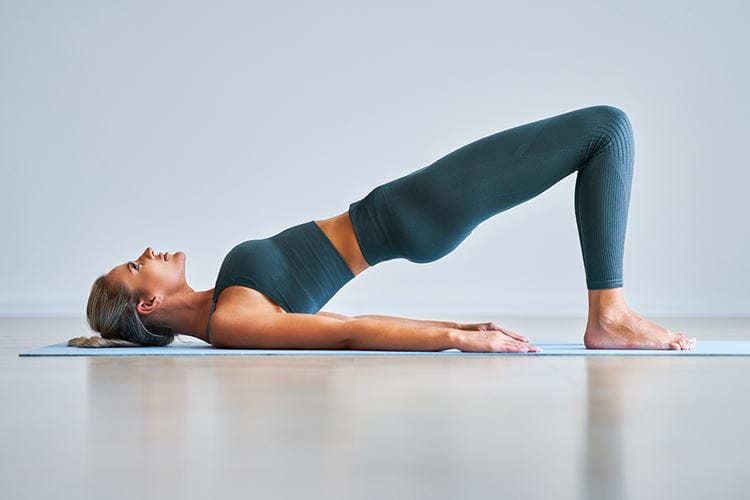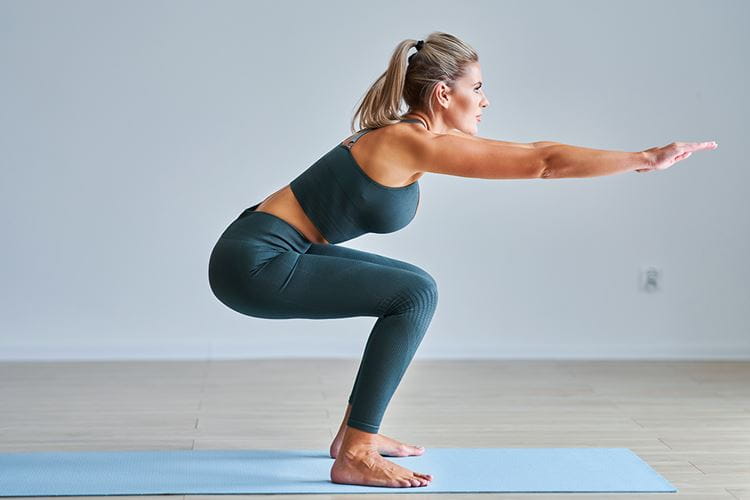A little curve in your spine is perfectly healthy. In fact, that little S-shape is what keeps you flexible and strong. That curve in your lower back is called lordosis, and although a little curve is a good thing, when the arch becomes too pronounced, you may develop swayback or hyperlordosis.
“The spinal cord’s connected to the… hip bone!” Because everything is connected, swayback is commonly paired with anterior pelvic tilt (APT), which is when your hips tilt forward. Together or separate, both swayback and anterior pelvic tilt are fairly common and can cause some discomfort. The good news is that most cases are completely treatable with a little extra attention.
Jonathan Landsman, MD, is an orthopedic spine surgeon with Banner Brain & Spine. We spoke with him about the risks of swayback and APT as well as a few potential solutions.
What Are the Causes?
Swayback and anterior pelvic tilt are two separate issues, while the presence of one may lead to the other, the causes could be completely different. Dr. Landsman mentioned that common causes for sway back include muscle weakness in the core, degeneration of vertebrae, obesity, pregnancy or extended periods of poor posture.
On the other hand, a sedentary lifestyle is the most common cause of APT. Extended periods of sitting can cause ligaments in the front of the hips to shorten. At the same time, ligaments in the back lengthen, causing your hips to tilt forward when you straighten your legs. Sorry ladies, women are naturally more prone to APT.
Correcting the Curve & Helping Your Hips
In most cases of hyperlordosis, the remedies are simple at-home stretches and exercises or physical therapy. Although some extreme conditions could require surgery, Dr. Landsman noted that he will always recommend exercise-based solutions when possible. Many of the same exercises will benefit your hips and back, making them great options for everyone. There are a lot of ways you can strengthen and stretch the area surrounding your lower back. Exercise programs like yoga can be an excellent way to do both. Try these poses:
Cat/Cow
Moving slowly back and forth between these two poses will engage your core and create flexibility through your lower back and hips.
Downward Dog
Lengthen your back by straightening your spine all the way through your arms and into the ground through your palms. You should feel this in your back, core and hamstrings.
Table Pose with Leg Lift
In cases of anterior pelvic tilt, your glutes, hip flexors and hamstrings should all be strengthened. On all fours and with a straight back, extend one leg at a time behind you.
Bridge
With your shoulders and feet on the ground, gently lift your hips and bring them back down. You should feel your core and glutes engage and a stretch in your hip flexors.
Chair Pose
Coming in and out of this pose will feel just like a squat. This exercise will strengthen your hips and abdominals.
Stay Aligned
“We used to treat the spine or the hips separately,” said Dr. Landsman. “But we’ve learned that the two are very interconnected. The posture in your hips will affect the curve of your spine and vice versa. For this reason, our treatment will always take both factors into account.” The answer is found in well-rounded, regular exercise and activity.
If your back has become rigid or if you are experiencing persistent discomfort in your hips or lower back, reach out for help to put together a strengthening and recovery plan. Schedule an appointment to discuss your options with your doctor or find one at Banner Health. Physical therapists and other specialists are available to help you find your alignment and live in comfort.
